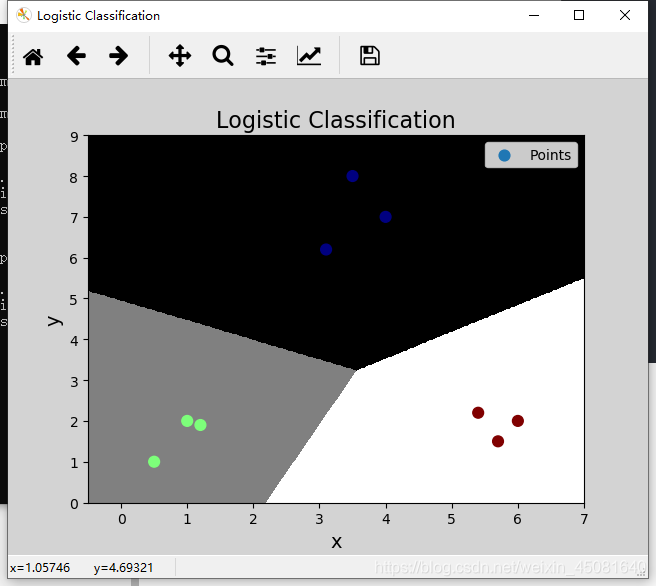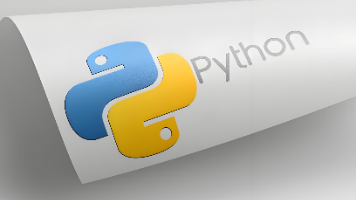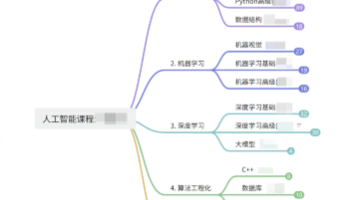python+sklearn之机器学习多元化分类
多元分类通过多个二元分类器解决多元分类问题.特征1特征2==>所属类别47==>A3.58==>A1.21.9==>B5.42.2==>C若拿到一组新的样本, 可以基于二元逻辑分类训练出一个模型, 判断属于A类别的概率. 再基于同样的方法训练处两个模型,分别判断属于B类别/ 属于C类别的概率, 最终选择概率最高的作为新样本的分类结果.案例:"""多元逻辑分类"""im
·
多元分类
通过多个二元分类器解决多元分类问题.
| 特征1 | 特征2 | ==> | 所属类别 |
|---|---|---|---|
| 4 | 7 | ==> | A |
| 3.5 | 8 | ==> | A |
| 1.2 | 1.9 | ==> | B |
| 5.4 | 2.2 | ==> | C |
若拿到一组新的样本, 可以基于二元逻辑分类训练出一个模型, 判断属于A类别的概率. 再基于同样的方法训练处两个模型,分别判断属于B类别/ 属于C类别的概率, 最终选择概率最高的作为新样本的分类结果.
案例:
"""
多元逻辑分类
"""
import numpy as np
import matplotlib.pyplot as mp
import sklearn.linear_model as lm
x = np.array([
[4, 7],
[3.5, 8],
[3.1, 6.2],
[0.5, 1],
[1, 2],
[1.2, 1.9],
[6, 2],
[5.7, 1.5],
[5.4, 2.2]])
y = np.array([0, 0, 0, 1, 1, 1, 2, 2, 2])
# 把样本绘制出来
mp.figure('Logistic Classification', facecolor='lightgray')
mp.title('Logistic Classification', fontsize=16)
mp.xlabel('x', fontsize=14)
mp.ylabel('y', fontsize=14)
mp.tick_params(labelsize=10)
mp.grid(linestyle=':')
# 绘制分类边界线
l, r = x[:, 0].min()-1, x[:, 0].max()+1
b, t = x[:, 1].min()-1, x[:, 1].max()+1
n = 500
grid_x, grid_y = np.meshgrid(
np.linspace(l, r, n),
np.linspace(b, t, n))
# 构建逻辑分类器
model = lm.LogisticRegression(
solver='liblinear', C=1000)
model.fit(x, y)
# 把grid_x与grid_y抻平了组成模型的输入,预测输出
test_x = np.column_stack(
(grid_x.ravel(), grid_y.ravel()))
pred_test_y = model.predict(test_x)
grid_z = pred_test_y.reshape(grid_x.shape)
mp.pcolormesh(grid_x,grid_y,grid_z,cmap='gray')
mp.scatter(x[:, 0], x[:, 1], s=60, c=y,
marker='o', label='Points', cmap='jet')
mp.legend()
mp.show()

更多推荐
 已为社区贡献11条内容
已为社区贡献11条内容










所有评论(0)